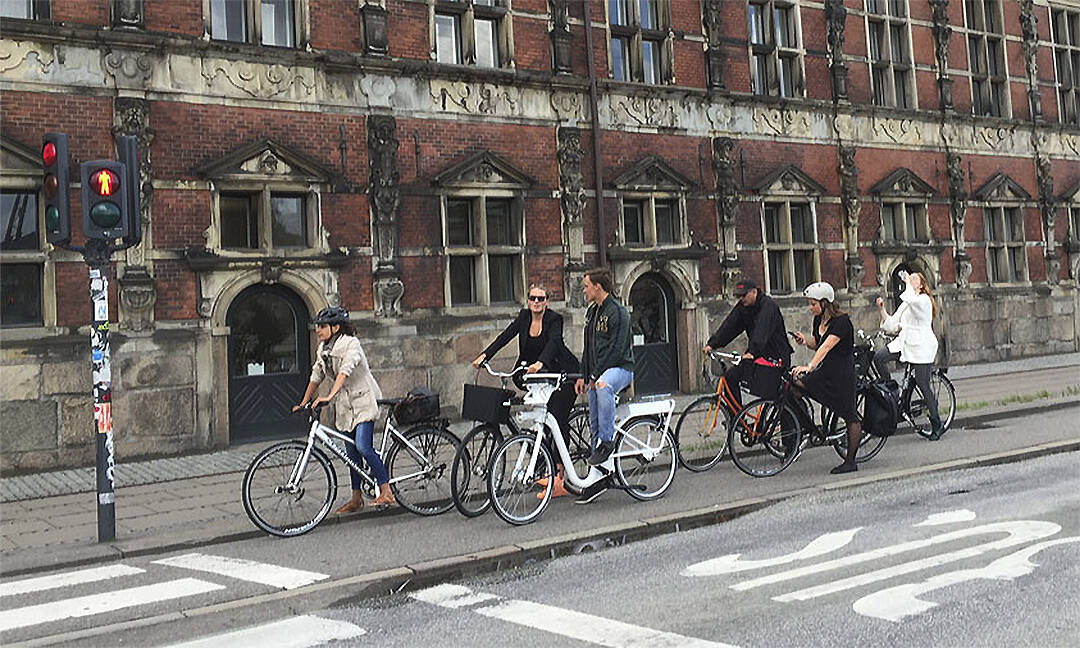“Wonderful Wonderful Copenhagen for me.” — Danny Kaye
Bainbridge Island City Councilmember Leslie Schneider just returned for from a trip to Copenhagen.
“Raised bike lanes are everywhere,” she said at last week’s council meeting.
The council was discussing improvements to Madison Avenue. Schneider was one of a number of councilmembers who wanted more than just a painted stripe separating motorists from bicyclists.
Public Works director Chris Wierzbicki explained that it would be cost-prohibitive at this point, but the improvements are being made so more could be done in the future.
He explained the base project would cost up to $5.6 million. That would include narrowing lanes with paint to expand bike lanes on the south end. In the middle, it would widen and have protected bike lanes, some buffer islands, include painting such as for sidewalks and improve access. To the north, it would include sewer improvements, pavement restoration and bike lanes on both sides of the street.
The council approved that plus alternative 1, which includes flashing beacons, some raised crosswalks, sidewalks extension to Sakai Park, traffic calming and a protected bike lane. That adds about $500,000 more. The council did not yet approve alternative 2, which would have widened the sidewalk from New Brooklyn Road to Highway 305 for another $300,000.
Wierzbicki recommends collecting bids for all three in case the project comes in under budget.
The city has $2.75 million, so it needs $2.85 million more. They decided to use a $2 million federal ARPA grant for sustainable transportation. And $1 million from the 2023 pavement preservation program.
The last idea caused the most discussion. Councilmembers did not want to take money from that fund, feeling the city already isn’t spending enough on road upkeep.
“It’s not good policy” taking from the road preservation fund, Councilmember Kirsten Hytopoulos said. “It’s arguably inefficient already.”
The council decided to spend $155,000 from its own contingency fund to reduce the amount taken from road preservation. The council was told it gets $200,000 a year for that fund. It’s a use it or lose it option.
Deputy Mayor Brenda Fantroy-Johnson asked Wierzbicki how much taking money from the road preservation fund would set that program back.
“I don’t see it as pushing back” the program, he said, just prioritizing where it goes. He said that area should be a priority because of its high volume of traffic and poor road quality.
The Public Works director said the projects were bundled to save at least $150,000, as that requires less staffing and products can be bought in bulk. He also said the city recently received a one-year extension on the ARPA grant, but time still is of the essence. “If we hold off it will become more expensive,” he said.
Hytopoulos agreed the council should not delay. “We’re already stretching using road preservation” money to help pay for it.
Mayor Joe Deets said he would have liked to build the projects for all ages and abilities, but we’re “very pressed for money. That level of upgrade we can do in the future.”
Councilmember Clarence Moriwaki asked if the project could stay on budget.
Wierzbicki said the overall project contingency fund of 15% should handle any inflation, although asphalt costs in the last six months are as high as he’s seen them, and the cost of gas increases the price of everything that has to be delivered.
Hytopoulos said she didn’t want to vote for it due to taking funds from road preservation, but she would anyway because the city needs to be a good grant receptor.
During public comments, two people spoke on this topic.
Susan Loftus said Madison Avenue is at the heart of the sustainable transportation network. It’s near the downtown core of Winslow, schools and grocery stores, the primary north-south connection. She said it needs to be safe even for the most vulnerable. “Don’t accept it until revisions can be made,” she said. While much of it is good, it “needs a few tweaks.”
Fran Korten agreed. “Do it right. Kids can’t bike on it if it’s not safe. It needs protected bikeways, not just paint.”



